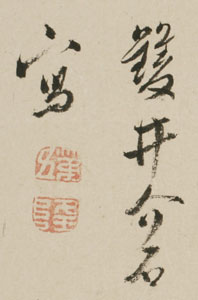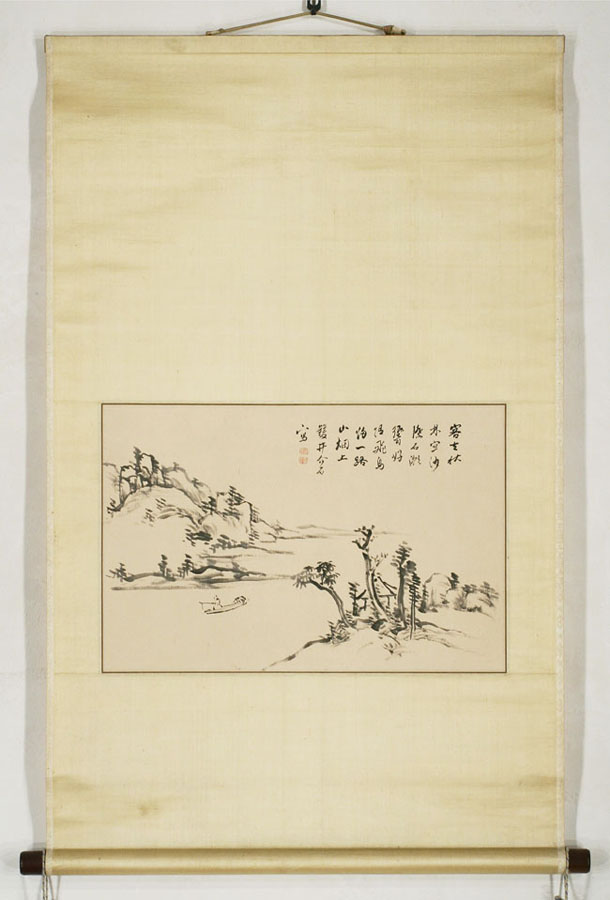Nanga
LandscapeSigned: Sôi Kaiseki sha
Seals: Daigo Ryû
Technique: sumi on paper 29,8 x 44,8
Mounting: cream satin 93,5 x 57,8
Condition: very good
客去秋林空
沙際石瀨響
好隨飛鳥歸
一路山煙上
The visitor has left, and the autumn forest empty again
Water murmurs over the boulders along the brook
And I enjoy watching the birds on their way back
The mountain path runs past the hazy clouds
(Dong Qichang 董其昌) (HK)
Kaiseki was a leading Nanga painter. Unlike most of his bunjin collegues Kaiseki was well to do, which afforded him the best teachers. At the age of 21 he became close friends with Kuwayama Gyokushû (1746-1799) a pupil of Ikeno Taiga (1723-1776). He helped Kaiseki to deepen his commitment to the bunjin style. In 1767 he moved to Kyoto and studied with Taiga for three years and they became well connected. In 1893 he moved back to Wakayama, to serve the daimyo as the supervisor of sake brewing later to be extended with supervision of the production of copper, sugar cane and timber. During his travels he met with a lot of famous bunjin throughout the country. He became acquainted and befriended with the highest level ofbunjin: Rai Sanyô, Nukina Kaioku, Kimura Kenkadô and Tanomura Chikuden.
Kaiseki, Sô Aiseki (17..-1837?) and Nagamachi Chikuseki (1747-1806) were called the three celebrated "stones", (seki) of Japan, of whom Kaiseki was considered the best.
Reference:
Roberts p. 64
Araki pp. 378-381
Rosenfield B. 67 (# 167)
Cahill p. 48 (# 19)
Price: ON REQUEST

